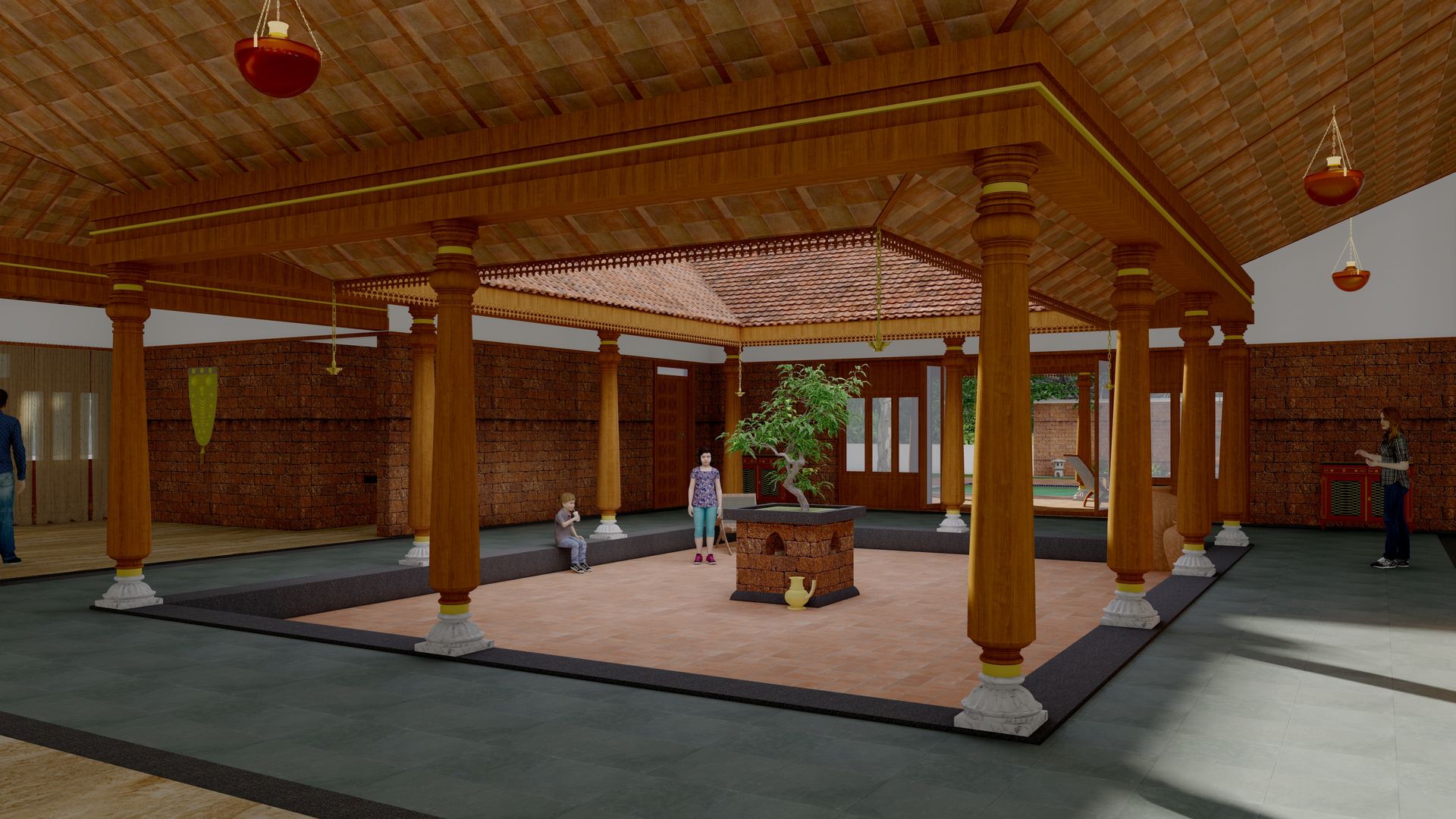Kerala is witnessing a beautiful shift in how homes are built. Residential architecture in 2025 combines smart living, eco-conscious materials, and timeless design. The blend of tradition and technology is redefining what a "home" means in God's Own Country.
What's in This Post
- Understanding Kerala's Evolving Home Designs
- Current Building Practices & Their Limits
- The New Way Forward
- Why These Trends Matter
- How to Use These Trends in Your Project
- Real Example: A Thrissur Home
- Best Practices for 2025 Builds
- Overcoming Common Challenges
- Future of Home Design in Kerala
- FAQs About Kerala Home Trends
Understanding Kerala's Evolving Home Designs
Kerala architecture is a mix of climate-friendly design and cultural identity. In 2025, it's evolving with:
- Sustainable Materials: Bamboo, laterite stone, recycled wood.
- Smart Homes: Voice assistants, solar panels, and IoT-connected appliances.
- Minimalist Vernacular Style: Simple forms, open courtyards, and sloped roofs.
Important Point: Builders are balancing high-tech with heritage.
What People Do Now and Why It's Not Enough
Many homes still follow outdated practices:
- Flat concrete roofs trap heat.
- Overuse of granite and vitrified tiles.
- Ignoring cross-ventilation.
Common Mistakes:
- Copy-paste floor plans.
- Low sunlight access.
- Poor rainwater harvesting systems.
Important Point: These designs raise power bills and reduce comfort.
A Better Way to Build for Kerala in 2025
Today's better homes in Kerala use:
- Passive Cooling: Courtyards, shaded verandas, wind tunnels.
- Smart Materials: Mud bricks with sensors, solar glass, hybrid walls.
- Integrated Landscaping: Kitchen gardens, water bodies.

Main Ideas:
- Nature-based solutions.
- Traditional look with modern guts.
- More wellness-focused spaces.
Why These Trends Matter
- Energy Savings: Smart tech + passive cooling = lower electricity bills.
- Healthy Living: Natural light, air, and organic kitchen setups.
- Higher Resale Value: Eco-certified homes attract better buyers.
Important Point: It's not just fashion—it's future-proof living.
How to Use These Trends in Your Project
First Step: Start With the Climate
- Design with sun path and wind in mind.
- Avoid west-facing heat traps.
Second Step: Choose Local & Smart Materials
- Bamboo, red oxide flooring, solar tiles.
- Ensure material sourcing is ethical.
Third Step: Integrate Simple Smart Systems
- Basic automation: lighting, fans, security.
- Plan wiring in early design phase.
Expert Tips:
- Always test soil before deciding on foundation.
- Invest in ventilation, not just aesthetics.
Real Example: A Thrissur Home Story
The Problem
A family wanted to build a house on ancestral land but faced heat issues and budget constraints.
What They Did
- Used laterite stone from nearby quarry.
- Added solar panels and a central courtyard.
- Opted for red oxide flooring and louvered windows.
What Happened
- 30% drop in electricity use.
- The home stays cooler by 4°C.
- Guests love the Kerala charm + smart features.
Best Practices for Kerala Homes in 2025
Method 1: Follow Vastu + Modern Logic
- Combine traditional planning with scientific flow.
Method 2: Design for Monsoons
- Drainage slopes, tiled roofs, closed circuits.
Method 3: Think Future-Ready
- Plan space for EV charging, work-from-home rooms.
Important Point: Think ahead and mix logic with legacy.
Solving Common Home Design Issues
1: Humidity Damage
- Fix: Use breathable walls + natural finishes.
2: Poor Lighting
- Fix: Skylights, light wells, reflective surfaces.
3: Mosquito Menace
- Fix: Elevate floor, install mesh layers, use citronella plants.
Expert Advice: Always match your design to lifestyle and location.
What's Next in Kerala's Home Design?
1: AI Home Management
- Predicts usage, controls energy in real-time.
2: Prefab Mud Homes
- Ready-to-assemble sustainable houses.
3: Regenerative Architecture
- Buildings that give back—rainwater, compost, solar grid tie-ins.
Important Point: Kerala will lead green design in India.
FAQs About Kerala Architecture in 2025
Q: Are smart homes expensive in Kerala?
A: Not necessarily. Start small with lights and security.
Q: Can old homes be upgraded?
A: Yes, with better insulation, solar retrofits, and ventilation hacks.
Q: Is red oxide flooring still popular?
A: Yes, it's making a comeback for being cool and chemical-free.
Q: Do I need an architect for small homes?
A: Definitely. Even small homes need smart planning.
What to Do Next
Summary: Kerala homes are becoming smarter, greener, and rooted in culture.
Benefit: Saves money, boosts comfort, future-proofs homes.
Action Steps:
- Talk to a local eco-architect.
- Visit a green-certified model home.
- Start with one room upgrade this year.
We’d love to hear your thoughts! What trend excites you the most? Share your comments or questions below.
More to Read:
- How Architects Can Help You Maximize Your Budget
- Kerala’s Architectural Heritage : Blending Tradition with Modern Design
- 10 Steps to Choose the Best Architects in Kerala for Your Dream Home
Emerging Trends in Residential Architecture in Kerala (2025)